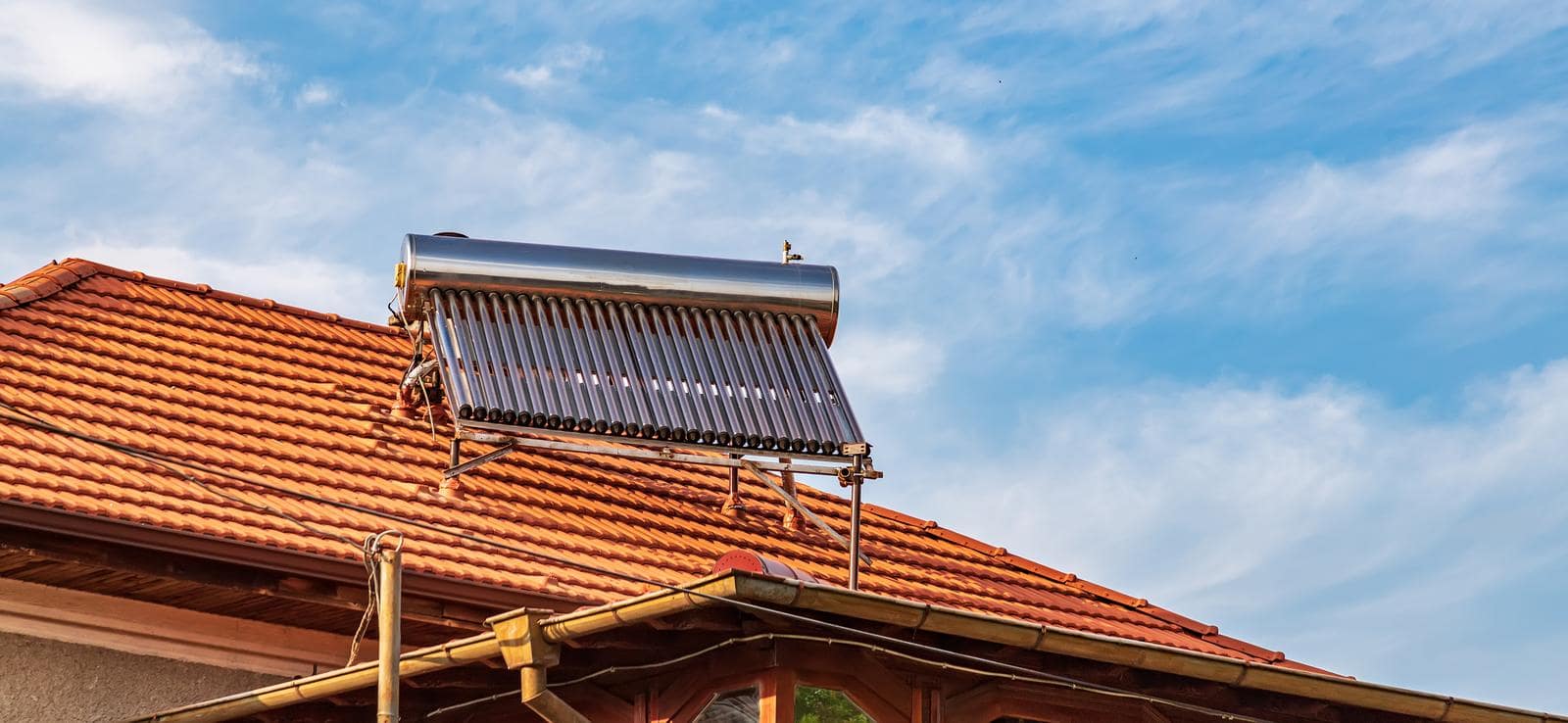If you’re not sure whether your solar hot water system is working correctly, don’t worry – here’s a helpful step-by-step guide on how to check if your system is functioning properly. We’ll also give you some tips on how to reduce energy consumption from your solar hot water system. So, whether you’re just getting started with solar or you’ve been using it for a while, be sure to read on!
1. Locate your solar hot water system
The first step is to figure out where your solar hot water system is actually located. The panels are typically installed on the roof of course, but the storage tank is usually mounted at ground level, somewhere out of sight. It could be inside or outside your home, likely contained within a cabinet or casing to protect it. If you can’t find your system anywhere practical, it’s possible that it’s been installed underground. In this case, you’ll need to contact your installer to get further instructions.
2. Start by checking the pump
Checking whether the pump is running is a straightforward process. Simply find the pressure gauge on your system and see if the needle is moving. If it is, that means the pump is running and everything is working as it should be. If the needle isn’t moving, however, that means the pump isn’t functioning properly, and this may help you diagnose the problem better as you proceed with the next steps listed below.
3. Check the insulation on your pipes and fittings
This is important because solar hot water systems rely on heat transfer to function correctly. If there are any gaps or cracks in the insulation, heat will escape and your system will be less efficient. You can check the insulation by feeling for any cold spots – if you find any, be sure to contact a reputable plumber so they can fix the problem. If everything looks good so far, it’s time to move on to the next step!
4. Make sure there is no air trapped in the system
One of the most common problems with solar hot water systems is that air gets trapped in the system. This can happen for a number of reasons, but usually it’s because of a problem with the installation. If there is air in the system, it will prevent heat from being transferred properly and your system will be less efficient.
To check for air in the system, you’ll need to find the pressure relief valve – it’s usually located near the storage tank. Once you’ve found it, open the valve and wait for any air to escape. If water starts coming out of the valve, that’s a good sign – it means there’s no air in the system. If not, it may be time to call your local plumber.
5. Inspect the collector for dirt, debris, or bird droppings
Given that your solar panels are presumably located on the roof, they’re very prone to accumulating dirt, dust, and debris like leaves or bird droppings over time. This accumulated gunk may be blocking the sun’s rays from penetrating the collector cells and being transferred to energy for your home.
It’s worth climbing onto your roof so that you can inspect your solar panels and clear away any built-up dirt that’s collected. Be sure to place your ladder carefully, and exercise caution while climbing onto the roof and moving around up there. We recommend having a spotter on the ground below for support.
To clean your panels, you’ll need a soft cloth and some warm, soapy water. Just wipe down the collector and be sure to rinse it off completely. Once you’re finished, dry it with a clean cloth. While you’re up there, try feeling the solar panels to see if they’re warm (this will only work on a sunny day). If the panels are not warm to the touch, this means they’re still not absorbing heat from the sun and the issue might be more complex.
6. Check that all valves and taps are open
If you’re still experiencing problems with your solar hot water system, check the valves and taps. If any of them are closed, it could prevent water from flowing properly and cause your system to be less efficient. To check the valves, just turn each one on and off a few times to make sure they’re not stuck. As for the taps, there are usually two – one for the cold water supply and one for the hot water outlet. Both of these should be open all the way.
7. Turn on the pump and wait for the water to heat up
Hopefully after completing the above steps, you’ll have successfully resolved the issue. At this point, the final step for how to check if your solar hot water is working is to turn on the pump and hope the water heats up. If it still doesn’t produce warm water for your household, it’s time to call Simoes Plumbing for efficient and reliable repairs from trained professionals.
Quick tips for reducing energy consumption from your solar hot water system
- Insulate your pipes and fittings, as this will help to prevent heat loss and keep your water hotter for longer.
- Use a timer to control when the system is turned on and off, so you’re not wasting energy when you don’t need hot water.
- Install a solar blanket, as this will help to trap heat in the storage tank and prevent heat loss.
Simoes Plumbing specialises in solar hot water system installation, repairs and servicing
Our friendly and professional solar hot water installers know how to check if your home’s solar hot water system is running efficiently. Call us for all your residential and commercial plumbing needs; from solar hot water installation and gas fitting to blocked drains, roofing/guttering and more.



